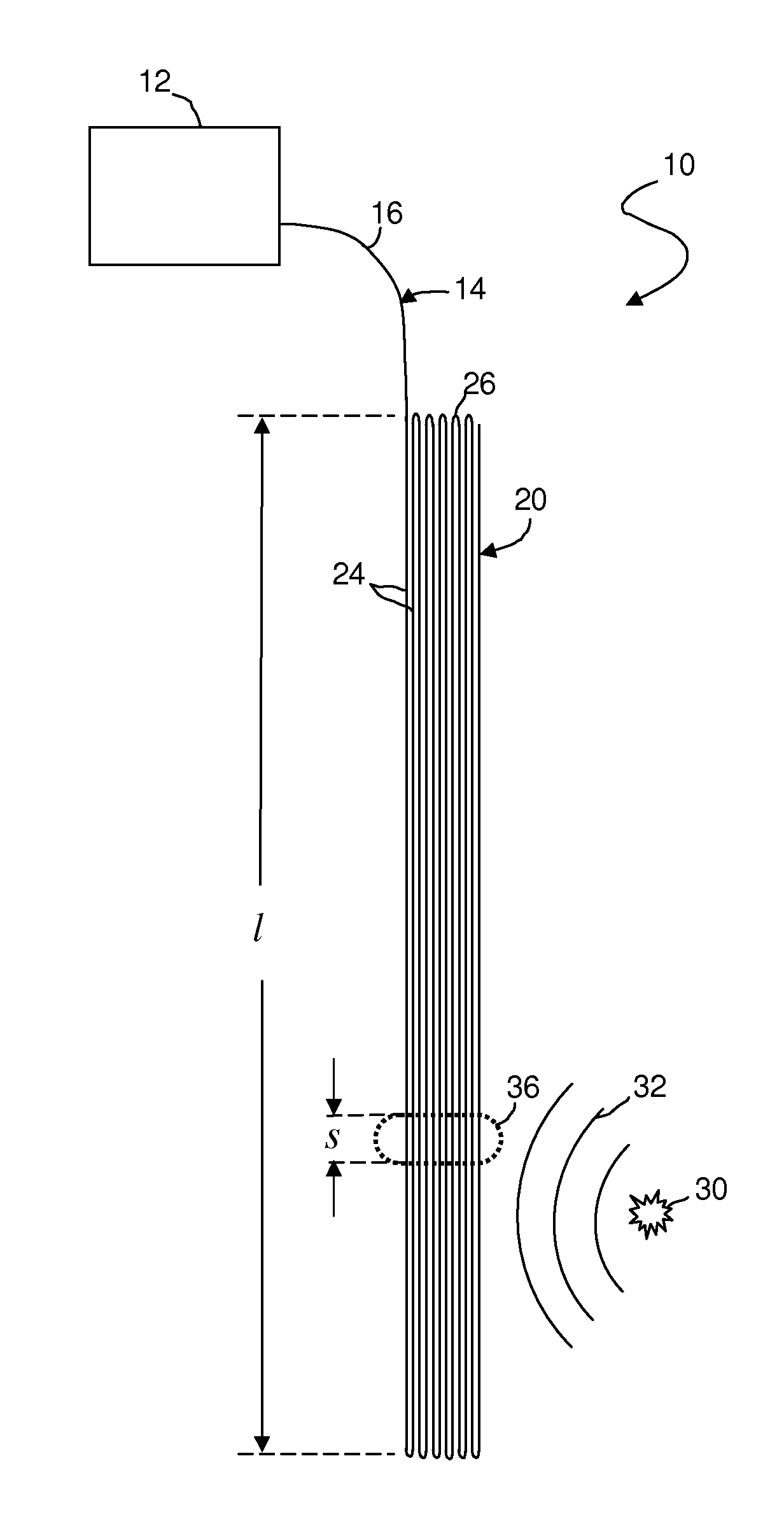Signal stacking in fiber optic distributed acoustic sensing
a technology of distributed acoustic sensing and signal stacking, applied in seismic signal receivers, instruments, seismic fields, etc., can solve the problems of distributed acoustic systems, undesired low signal to noise ratio, and significant noise in systems, so as to improve the signal to noise ratio of das systems
- Summary
- Abstract
- Description
- Claims
- Application Information
AI Technical Summary
Benefits of technology
Problems solved by technology
Method used
Image
Examples
Embodiment Construction
[0017]Referring to the FIGURE, a system 10 according to a preferred embodiment of the invention comprises a light box 12 and a fiber optic cable 14. Light box 12 comprises a light source and an optical receiver (not shown). Fiber optic cable 14 comprises an optional lead-in cable 16 and a sensing apparatus 20. If lead-in cable 16 is not present, sensing apparatus 20 may be connected directly to light box 12. Sensing apparatus 20 preferably comprises a plurality of n lengths of fiber 24, each length of fiber 24 having a length l, with adjacent pairs of fibers connected in series at fiber ends 26 so as to form an effective cable length L, where L=n×l.
[0018]One preferred embodiment of sensing apparatus 20 comprises one or more lengths of un-armored, dielectric-coated ribbon cable, such as SST-ribbon cable, such as is inexpensive and commercially available from Corning Cable Systems of Hickory, NC or from AFL Telecommunications of Duncan, S.C. Preferred ribbon cables contain 6-24 optica...
PUM
 Login to View More
Login to View More Abstract
Description
Claims
Application Information
 Login to View More
Login to View More - R&D
- Intellectual Property
- Life Sciences
- Materials
- Tech Scout
- Unparalleled Data Quality
- Higher Quality Content
- 60% Fewer Hallucinations
Browse by: Latest US Patents, China's latest patents, Technical Efficacy Thesaurus, Application Domain, Technology Topic, Popular Technical Reports.
© 2025 PatSnap. All rights reserved.Legal|Privacy policy|Modern Slavery Act Transparency Statement|Sitemap|About US| Contact US: help@patsnap.com


